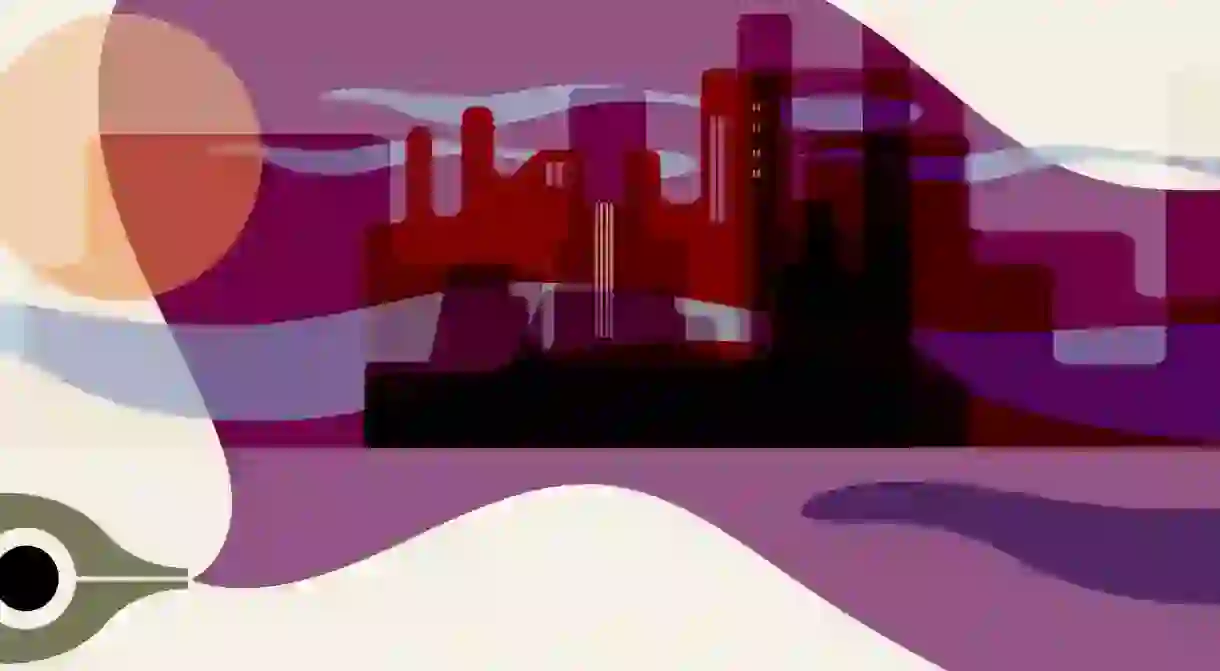10 Poems That Capture NYC In The 1920s

Influenced by movements such as the Harlem Renaissance and modernism, the social reverberations of immigration and the ratification of the 19th amendment, the poetry born in the 1920s presents a radical turn from the past whereby social construction and stratification, pain and sinful joy are blatantly exposed and celebrated. The following ten poems seek to capture New York City during this epic era.

‘The Penitent’ (1922) by Edna St. Vincent Millay
In the year 1920, American women were granted the right to vote. Following the passage of 19th amendment came the famous flappers – women flippant to social standards. Poet and author Edna St. Vincent Millay effectively encapsulates the newfound feminist attitudes expressed in the 1920s in ‘The Penitent‘ (1922), a poem that relays the author’s own ambivalence toward unconstrained ‘sins.’
‘The Weary Blues’ (1925) by Langston Hughes
An artistic and cultural movement that took place after WWI and into the middle of the 1930s, the Harlem Renaissance attracted black artists of multiple genres to what was considered the mecca of New York, Harlem. ‘Droning a drowsy syncopated tune’ on Lenox Avenue, the subject in ‘The Weary Blues‘ (1925) exemplifies the aesthetic and thematic qualities present in much of the artistic works of the Harlem Renaissance. By writing rhythmically engaging stanzas that parallel the rhythm of the blues, iconic Harlem Renaissance writer Langston Hughes both frames and constrains the subject of his poem through the very music he renders. In doing so, Hughes encapsulates the irony of being a black entertainer in the affluent Roaring Twenties where music is both a source of constraining labor and expression.
‘The Tropics in New York’ (1922) by Claude McKay
Also a literary artist of prominence during the Harlem Renaissance, poet Claude McKay was born in Jamaica in 1889. ‘The Tropics In New York‘ (1922) is an insightful work that evokes the nostalgia McKay and other immigrants experienced upon settling far from home in New York in the 1920s. By utilizing imagery reminiscent of his Jamaican homeland to describe a setting in NYC, McKay communicates the forlorn experience of being an immigrant through the occurrence of memory.

‘The Second Coming’ (1919) by William Butler Yeats and ‘The Wasteland’ (1922) by T.S. Elliot
‘The Second Coming’ (1919) by William Butler Yeats and ‘The Wasteland’ (1922) by T.S. Eliot are pivotal works of literature that express the disillusionment of a society left in shambles after World War I (1914-1918). While their pieces differ vastly different in style, both poets seem to utilize the poem itself, an amalgamation of symbols within the chaos, to decipher a future capable of framing the heinous acts of the First World War.
‘Wall Street at Night’ (1918) and ‘The Ghetto’ (1918) by Lola Ridge
Lola Ridge set herself apart from her contemporaries not only through her political activism and radical beliefs but also through the subject matter of her long-form poetry. Born in Dublin in 1873 and raised in New Zealand, Ridge immigrated to the United States at the age of 34 to eventually settle in the Lower East Side of NYC. First published in 1918, ‘The Ghetto‘ brings attention to the harsh urban realities faced by the immigrants of the Lower East Side tenements. Included in Ridge’s first book of poetry, The Ghetto and Other Poems, ‘Flotsom‘ speaks to the historical and visual reality of NYC. A beautiful concoction of transient city scenes where ‘High over Broadway/ A far-flung sign/ Glitters in indigo darkness,’ ‘Flotsom’ speaks to the beauty, rhythm and contradictions of life in the city near and into the dawn of the 1920s.
‘Dance of Death’ (1929) by Federico Garcia Lorca
‘Dance of Death‘ (1929) Federico Garcia Lorca, one of the most preeminent Spanish poets of the 20th century, expresses a surreal reaction to moving to NYC in the summer of 1929. In the poem, Lorca finds traces the journey of a conceptual mask throughout various parts of the city. From Wall Street to Broadway, the mask and the dance of death it partakes in allows Lorca to narrate a morbid yet vivacious take on the city during the 1920s.
‘Autumn Dusk at Central Park’ (1920) by Evelyn Scott
‘Autumn Dusk at Central Park‘ (1920) by modernist author and poet Evelyn Scott is a fluid and lyrical narration where objects and people seem to wane under the descent of the sun. With strong imagery and precise diction, the poem not only provides insight into the perceived splendor of a location iconic to New York City but is also an example of imagism, a poetic movement and strand of modernism that gained prominence in the early 20th century.
‘The Man Whose Pharynx Was Bad’ (1921) by Wallace Stevens
Before pursuing a law degree at the New York School of Law, poet Wallace Stevens worked at the New York Evening Post. During this tenure it is said the poet spent his free time exploring the city and chronicling his observations in a journal. In the poem ‘The Man Whose Pharnyx Was Bad‘ (1921) Stevens expresses the moods of living in a ‘metropole’ of ‘stirring poets’ that fail to sleep. By utilizing seasonal imagery, Stevens portrays the city as a center victim to ephemeral summers and inevitable winters. In doing so, Stevens manages to capture the familiar yet eternal elements of NYC during the 1920s still recognized and felt today.














